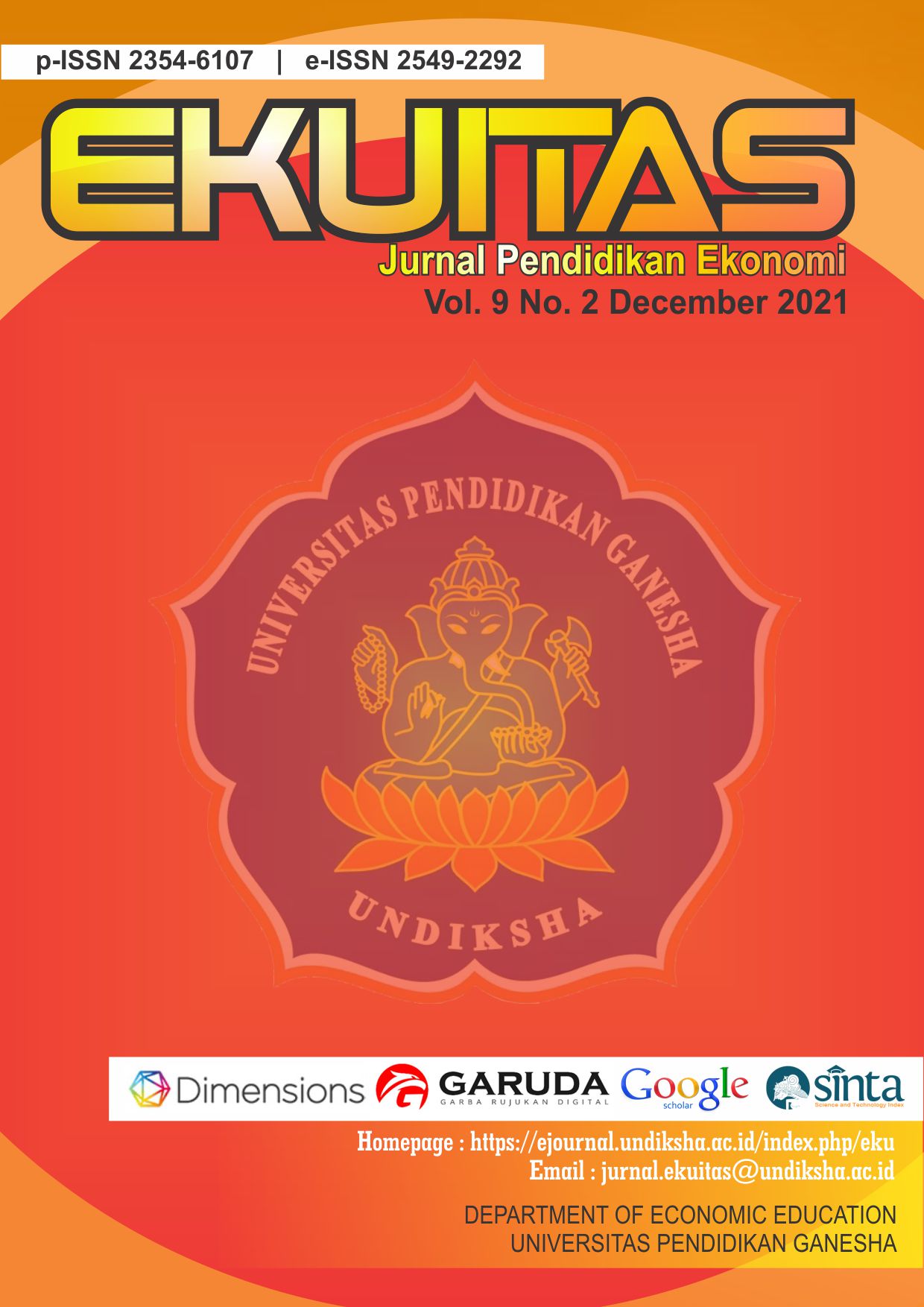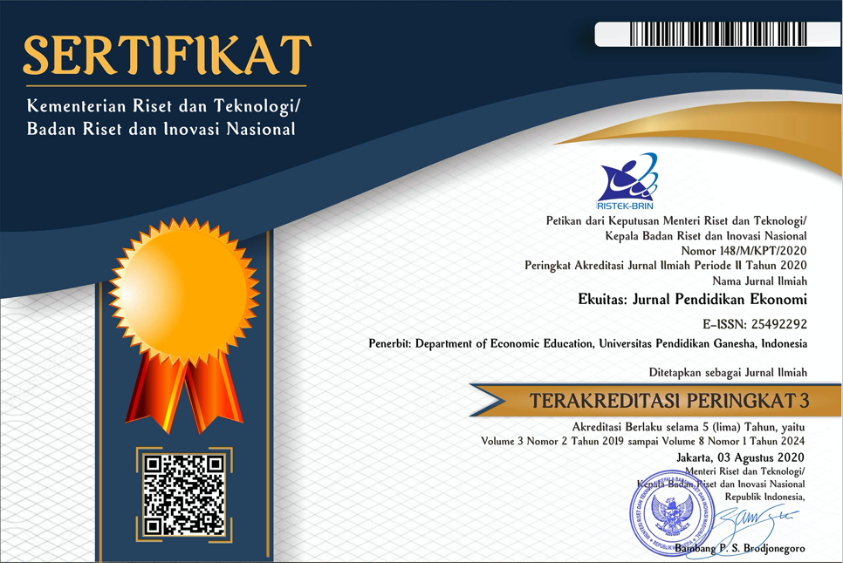The 5E Learning Cycle Model as Development of Booklet Teaching Materials at SMK BM Panca Budi 2 Medan
DOI:
https://doi.org/10.23887/ekuitas.v9i2.40947Keywords:
5E learning cycle model, booklet teaching materials, learning outcomes.Abstract
The purpose of this research was to determine the feasibility of booklet teaching materials based on the 5E learning cycle model developed in accounting subjects for class X SMK BM Panca Budi 2 Medan. The location of the research was at SMK BM Panca Budi 2 Medan, on Jalan Gatot Subroto KM 4,5. The class was class X Accounting for the 2020/2021 Academic Year. This research applied quantitative research and development with a 4-D teaching material development model (Four D Model), or 4P by Thiagjaran and Semmel (Trianto, 2013). The 4D development model consists of 4 main stages, namely: (1) define, (2) design, (3) develop, and (4) disseminate. The data analysis technique used was descriptive and inferential techniques. Based on the results of the research, the product of booklet teaching materials based on the 5E learning cycle model in accounting subjects with general journal material in class X SMK BM Panca Budi 2 Medan was feasible to use based on material expert validation with an average of 96.37% design experts, an average of 95, 8% and media experts with an average of 92.9%. Thus, it is suggested to teachers, especially at SMK BM Panca Budi 2 Medan to be more creative in making teaching materials.
References
Atiko. (2019). Booklet, Brosur dan Poster Sebagai Karya Inovatif di Kelas. Caremedia Communication.
Borg, W. R., & Gall, M. D. (2007). Educational research: an introduction. Longman Inc.
Djamaluddin, A. (2014). Filsafat Pendidikan. Istiqra: Jurnal Pendidikan Dan Pemikiran Islam, 1(2).
Lubis, T. (2019a). Learning Nandong in schools as a medium to inform the Simeuluenese local wisdom: An anthropolinguistics approach. Studies in English Language and Education, 6(2), 262–272.
Lubis, T. (2019b). Participant Structure in Learning English: Linguistic Anthropology Approach. 4th Annual International Seminar on Transformative Education and Educational Leadership (AISTEEL 2019), 571–573.
Mulyadi. (2011). Penelitian Kuantitatif dan Kualitatif serta Pemikiran Dasar Menggabungkannya. Jurnal Studi Komunikasi Dan Media, 15(1), 127–138.
Shaumiwaty, S., Lubis, M. A., Lubis, T., Dardanila, Purba, A., Nasution, T., Ramlan, & Hasrul, S. (2020). Teacher performance toward students’ mathematical literacy in teaching linear program mathematical models. Journal of Physics: Conference Series, 1663, 012066.
Sugiyono. (2013). Metode Penelitian Kuantitatif Kualitatif dan R & D. Alfabeta.
Sugiyono. (2020). Metode Penelitian Kualitatif. Alfabeta.
Sukmawati, S. S., Nursulistyo, E., & Oktaviyanti. (2018). Pengembangan bahan ajar booklet untuk meningkatkan hasil belajar pokok bahasan momentum untuk siswa kelas X semester 2 SMAN 4 Yogyakarta. Seminar Nasional Fisika, Dan Pendidikan Fisika, 53–60.
Syahfril. (2017). Dasar-dasar Ilmu Pendidikan. Kencana.
Trianto. (2013). Mendesain Model Pembelajaran Inovatif, Progresif, Konsep, Landasan, dan Implementasinya Pada Kurikulum Tingkat Satuan Pendidikan (KTSP). Kencana Prenada Media Group.








